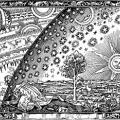279. Quadrivial Pursuits: the Oxford Calculators
Bradwardine and other thinkers based at Oxford make breakthroughs in physics by applying mathematics to motion.
Themes:
• M. Clagett, The Science of Mechanics in the Middle Ages (Madison: 1959).
• R.C. Dales, The Scientific Achievement of the Middle Ages (Philadelphia: 1973).
• D.A. Di Liscia and E.D. Sylla (eds), Quantifying Aristotle: the Impact, Spread, and Decline of the Calculatores Tradition (Leiden: 2022).
• C.H. Leijenhorst et al. (eds), The Dynamics of Aristotelian Natural Philosophy from Antiquity to the Seventeenth Century (Leiden: 2002).
• A. Maier, Studien zur Naturphilosophie der Spätscholastik, 5 vols (Rome: 1949-68).
• E.D. Sylla, “The Oxford Calculators’ Middle Degree Theorem in Context,” Early Science and Medicine 15 (2010), 338-70.
• E.D. Sylla, The Oxford Calculators and the Mathematics of Motion (New York: 1991).
• C. Wilson, William Heytesbury: Medieval Logic and the Rise of Mathematical Physics (Madison: 1956).
Stanford Encyclopedia: William Heytesbury
Stanford Encyclopedia: Richard Kilvington







Comments
Cube roots
Hi Peter,
I think there is a vocal typo at 17:50, you say 3^(1/3) to 2^(1/3) (3 to the third and 2 to the third, i.e. the cube roots) but you mean 3^3 to 2^3.
In reply to Cube roots by Quadrupedant
Cubes
Oh yes, you're right: in my script it is right but I misspoke when recording it (I like the idea of a "vocal typo").
Let me also heartily congratulate you on your James Brown icon and email address. Make it Funky (Parts 3 and 4)!
In reply to Cubes by Peter Adamson
dusting of high school math ?
I listen to each podcast at least 3 times (I need that) but in this podcast I heard you say 3 to the 3rd to 2 to the 3rd (yes, I heard it 3 times).
So i think you were right all 3 times, it means 3 times 3 times 3 to 2 times 2 times 2. No vocal typo. No correction needed.
To the third doesn't mean to a power of one third (1/3), that would have been a cube root, like 27 tot the 1/3 equals 3 , going the other way round.
Or did you rerecord that ?
Anyway, I get the idea that it needed some big step to start applying algebra into physics for the first time, but what I don't get is that if they already did so in astronomy (for a long time) , why would it take so much to extend it to velocity ?
In reply to dusting of high school math ? by Erik Holkers
Correcting the record
Oh good! I'm glad it isn't wrong after all (I didn't re-record it).
That's a good question about why it took so long. I'm not really the right person to answer this, but for the sake of argument: pne factor may be that the branch of mathematics used in astronomy was "spherics" and not arithmetic. Also, astronomy allows for exact measurement with pre-modern resources (just observe the changing position of the planets), whereas measuring the speed of a projectile is really difficult - I mean, it's not like they had speed guns. Even when the Oxford Calculators started using mathematics to model sublunary motions the values they used are totally fictional, like, "say that Socrates is moving 2 units of space in 3 units of time," that kind of thing. Part of Galileo's achievement was to figure out clever ways to measure freefall by slowing it down, using inclined planes, which is far from obvious.
Add new comment